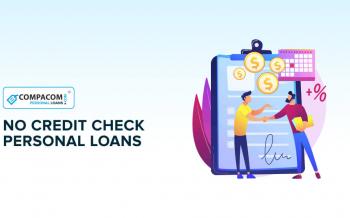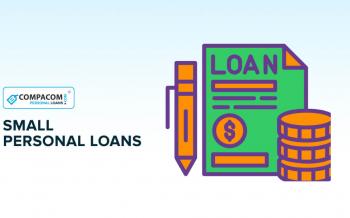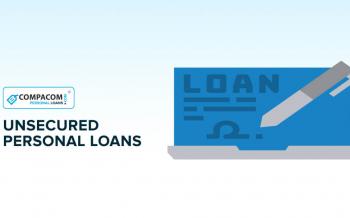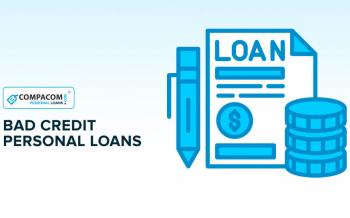There is a rising need for green loans, sustainable financing, and ethical lending which are widely available with online $10,000 loans. With an increase in the frequency of bushfires, droughts, and flash floods—all of which have significant negative consequences on our ecosystems—people worldwide are becoming more aware of the effects of climate change on the country's environment. Therefore, Americans are making efforts to cut back on their energy and carbon emissions as a result of rising inflation, which has made people reevaluate their spending patterns.
Alternative Loan Offers for Instant Cash
What Is A Green Loan?
A green loan is a type of personal loan financing that provides the possibility for borrowers to utilize the money raised exclusively to finance initiatives that significantly advance an environmental goal. In that it raises money for green projects that qualify, green lending loans are comparable to a green bond. A green loan, on the other hand, is based on a loan that is usually made in a private operation and is smaller than a bond. Besides, they are guaranteed for bad credit. A green bond typically has a larger volume, may have higher transaction costs, and may be privately put or traded on an exchange.
The Green Loan Concepts and the Green Bond Principles (GBP) of the International Capital Market Association are two additional distinct but similar principles that apply to both green loans and green bonds (ICMA). Both instruments state that only qualifying green initiatives shall be funded with 100% of the proceeds.
The term "green project" has a deliberately broad definition that covers a variety of initiatives, including but not limited to those that are concerned with the production of renewable energy, energy efficiency, pollution prevention and control, conservation of natural resources, conservation of biodiversity, sustainable water management, clean transportation, or the construction of green structures.
Whatever the green project, it must clearly benefit the environment in some way. A green energy нloan must be designed according to the Green Loan Principles, an international standard based on the following four essential elements, in order to be referred to as a green loan. The GLPs offer a structure made up of four essential parts:
- Using the Proceeds. An illustration in real estate would be using the money to finance the construction of an eco-friendly structure.
- Project Evaluation and Selection Process. Borrowers must explain to their lenders their sustainability goals and demonstrate how the green project is in line with them.
- Proceeds management. To maintain transparency and advance the integrity of a green loan, the proceeds should be credited to a designated bank account or otherwise tracked by the borrower. Borrowers are encouraged to set up an internal governance procedure to monitor the proceeds of green cash loans in order to ensure transparency.
- Reporting. The usage of the proceeds from greenloans must be updated by borrowers to their lenders at least once a year. Both qualitative and quantitative measurements are to be utilized in the reporting.
What Drives Consumer Interest in Green Loans?
Customers are frequently encouraged by lenders who offer green loans to switch to more effective and ecologically friendly products. These rewards consist of:
- Choosing greens loans will result in low fixed rates,
- There are no installation or monthly servicing costs,
- Reimbursement of annual costs, flexibility to make additional repayments without incurring early repayment penalties,
- Cash back discounts.
Here is why you should think about green loans:
1) Reduce living costs
People are looking for innovative ways to reduce their living expenses as a result of growing inflation and living costs. You may save your energy costs and have a good effect on the environment if you get green loan to install energy-saving technologies in your home. Solar panels in particular are a green choice that can assist you in achieving your financial objectives.
2) Lenders Give Their Borrowers Rewards
Some lenders encourage borrowers who make the switch to a greener lifestyle by giving them discounts for residing in homes that consume less energy. For instance, some lenders might provide a secured, ultra-low rate loan with no startup, ongoing, or early repayment fees.
3) Both lenders and borrowers can gain greatly from green lending
There are the obvious environmental and reputational benefits. From the standpoint of the borrower, there is potential to receive an improved interest rate, and for organizations with ESG policies in place it is a method of integrating those policies in the finance department.
Investor demand for green bonds is extremely high on the capital markets, which means that lenders can capitalize on this demand. A growing number of people believe that businesses with ESG strategies make better borrowers in terms of credit risk.
What Makes Green Financing Crucial?
Of the estimated $30 billion in outstanding green loans, just $1.5 billion is now accounted for by developing countries. However, the market is expanding quickly, exceeding the market for green bonds in the foreseeable future. Green money loans help to bring lending goals and environmental goals into alignment. Green Loans aid borrowers in highlighting how environmentally friendly their activities and supply chain are. Potential issuers in emerging markets with small green portfolios may feel more inclined to receive a green loan than to issue a green bond due to the higher transaction costs of bond issuance, the minimum bond size to be tradeable, and the fact that only bonds above a certain size are tracked by various indices.
What Other Green Loan Types Exist?
Borrowers may also be eligible for green auto financing. In comparison to traditional auto title loans, these loans help people buy fuel-efficient automobiles and typically have reduced interest rates and costs. Automobiles are responsible for over 11% of all greenhouse gas emissions. Utilizing a green car loan enables you to buy an electric or hybrid vehicle, reduce your emissions, and actively combat climate change.
What You Should Be Aware Of Regarding Green Loans?
You might save up to 20% to 30% more energy or water by increasing the energy efficiency of your home, but there are a few things to keep in mind.
- Tax breaks
As incentives for making energy-efficient changes, tax credits might be provided in a certain tax year, although they might only cover a percentage of your costs.
For instance, the federal government provided a domestic energy tax credit for the previous years, which provides taxpayers with a credit worth up to 26% of the price of qualified expenses that have been approved (such as installing solar panels). If you are eligible for the credit, it could lower your federal income tax debt, but you must review the most recent payments.
- Varying terms and interest rates
You might borrow up to $100,000 and have up to 20 years to repay a loan, depending on the lender. Keep the following in mind before applying:
- Credit checks: Lenders will run a credit report on you when you apply for any personal loan, including green energy loans. Your credit scores may be impacted if the lender runs a rigorous credit investigation.
- High interest rates could exist: Borrowers with good credit often receive the best rates. Your interest rate can be much higher if your credit is less than perfect. Double-digit interest rates are offered by some lenders.
- Long loan terms are not offered by all lenders: Although some lenders provide repayment terms of up to 20 years, not all lenders do.
The Bottom Line
When it comes to green finance, we are just at the beginning of something significant. The adage that everything is about the money is no longer true. Profit and purpose are now important. The well-being of society is quickly rising in importance. A crucial component of the ideal virtuous circle we're attempting to establish is institutional investment in green lending loans. Although we are still some distance from there, the course of events seems obvious.








You are about to post a question on compacom.com:
Any comments or reviews made on this website are only individual opinions of the readers and followers of the website. The website and its authors team are not responsible, nor will be held liable, for anything anyone says or writes in the comments. Further, the author is not liable for its’ readers’ statements nor the laws which they may break in the USA or their state through their comments’ content, implication, and intent.